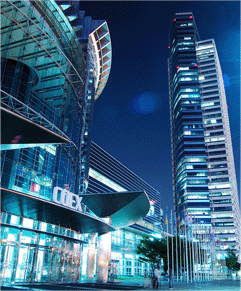Naver News reports that Nokia and Cisco are jumping on the Wibro bandwagon. The list of industry giants behind Wibro now includes Intel, Samsung, Motorola, Nokia, and Cisco.
Wibro, or mobile WiMax, allows high-speed internet connection on the go. Korean companies such as Samsung were heavily involved in the development and standardization of Wibro. Samsung et al hope Wibro will become a worldwide standard for mobile high-speed internet connection, so they can sell more Wibro-related devices and services.
The successful early deployment of CDMA networks in Korea helped Korean mobile phone makers such as Samsung and LG rise to become leaders in global market. Korean companies like Samsung expect Wibro to be another boon to their business.
Where does Wibro and HSDPA stand now in Korean market?
But Wibro is not having a spectacular success in Korea as yet, roughly a year after the commercial deployment. There are about 67,000 Wibro subscribers, versus 4.5M HSDPA phone users, in Korea. Again, 4.5M is the # of HSDPA phone users - it might not equal to the number of HSDPA data services users. Carriers often mandate HSDPA data service for several months, for those customers who buy HSDPA handsets on subsidy. If you count the number of people who can't live without HSDPA data service, the number should be significantly lower than 4.5M.
So, what do average Korean people have to say about the mobile internet service? There have been lots of expectations torwards Wibro but there are few actual users at least for now. HSDPA is reliable and fast, but also expensive (about $45 per month) and limited (only up to 4GB is covered by the $45). Looks like people are still pretty much satisfied with the good old fixed broadband internet and, when they have to go mobile, the $13-per-month Nespot nationwide Wifi service is pretty much as fast and ubiquitous as the new technologies promise to be.
Wibro, or mobile WiMax, allows high-speed internet connection on the go. Korean companies such as Samsung were heavily involved in the development and standardization of Wibro. Samsung et al hope Wibro will become a worldwide standard for mobile high-speed internet connection, so they can sell more Wibro-related devices and services.
The successful early deployment of CDMA networks in Korea helped Korean mobile phone makers such as Samsung and LG rise to become leaders in global market. Korean companies like Samsung expect Wibro to be another boon to their business.
Where does Wibro and HSDPA stand now in Korean market?
But Wibro is not having a spectacular success in Korea as yet, roughly a year after the commercial deployment. There are about 67,000 Wibro subscribers, versus 4.5M HSDPA phone users, in Korea. Again, 4.5M is the # of HSDPA phone users - it might not equal to the number of HSDPA data services users. Carriers often mandate HSDPA data service for several months, for those customers who buy HSDPA handsets on subsidy. If you count the number of people who can't live without HSDPA data service, the number should be significantly lower than 4.5M.
So, what do average Korean people have to say about the mobile internet service? There have been lots of expectations torwards Wibro but there are few actual users at least for now. HSDPA is reliable and fast, but also expensive (about $45 per month) and limited (only up to 4GB is covered by the $45). Looks like people are still pretty much satisfied with the good old fixed broadband internet and, when they have to go mobile, the $13-per-month Nespot nationwide Wifi service is pretty much as fast and ubiquitous as the new technologies promise to be.


